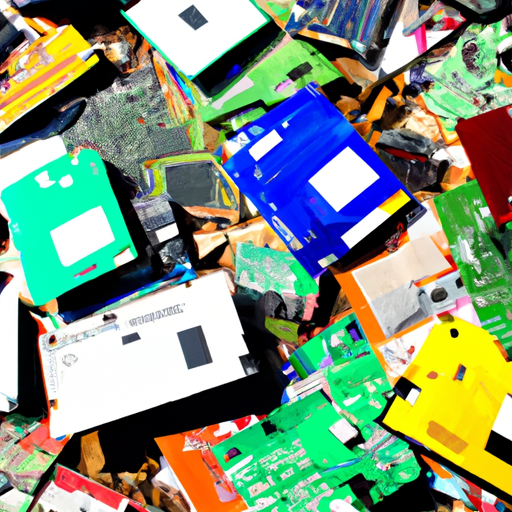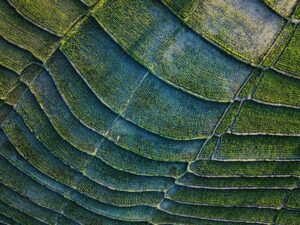How Can We Reduce Electronic Waste: Introduction
You’re surrounded by electronic devices that have become an integral part of your daily life. From smartphones to laptops and televisions, these gadgets provide convenience and entertainment. However, with rapid technological advancements, the lifespan of these devices is becoming shorter, leading to an alarming increase in electronic waste. The question arises: How can we reduce electronic waste? In this article, we will explore practical and effective ways that you can implement to minimize electronic waste and create a more sustainable future.
How Can We Reduce Electronic Waste: Implement E-waste Collection Programs
Establishment of Collection Centers
One crucial step in reducing electronic waste is the establishment of collection centers where individuals can safely and conveniently dispose of their unwanted electronics. These collection centers can be set up in designated locations, such as recycling facilities, community centers, or even retail stores. By providing easily accessible drop-off points, more people will be motivated to properly discard their electronic devices instead of throwing them in the trash.
Collaboration with Retailers and Manufacturers
Another effective way to tackle electronic waste is by fostering collaborations between retailers, manufacturers, and recycling organizations. This can be achieved through partnerships and incentives that encourage retailers to take responsibility for the collection and recycling of electronic devices. By working together, retailers and manufacturers can develop efficient and cost-effective methods for the proper disposal and recycling of electronic waste.
Promote Take-Back Programs
Take-back programs play a significant role in reducing electronic waste by allowing consumers to return their old electronic devices to the manufacturer or retailer. This ensures that the devices are recycled or properly disposed of rather than ending up in landfills. Implementing and promoting take-back programs can be done through public awareness campaigns, educational initiatives, and providing incentives to encourage people to participate in these programs.
How Can We Reduce Electronic Waste: Encourage Responsible Recycling Practices
Increase Awareness and Education
Raising awareness about the importance and process of responsible electronic waste recycling is vital in promoting eco-friendly behavior. Educational initiatives can include community workshops, informational campaigns, and school programs that teach individuals about the environmental impact of e-waste and how to properly recycle electronic devices. By increasing awareness, we can inspire individuals to take action and make responsible recycling practices a part of their daily lives.
Support E-waste Recycling Services
To encourage responsible recycling, it is essential to support existing e-waste recycling services and organizations. This can be done through funding initiatives, tax incentives, or grants that promote the growth and development of these services. By investing in e-waste recycling infrastructure, we can ensure that there are sufficient facilities and technologies available for the proper recycling and disposal of electronic waste.
Create Incentives for Responsible Recycling
In order to incentivize responsible recycling practices, it is important to explore various options such as offering monetary rewards, tax benefits, or discounts on future purchases for individuals or organizations that properly recycle their electronic waste. By providing these incentives, we can motivate individuals to take the extra step in responsibly disposing of their old electronic devices, thereby reducing the amount of e-waste generated.

Check Out Our Top Eco Friendly Product Picks On Amazon Here
How Can We Reduce Electronic Waste: Extend Product Lifespan
Design for Durability and Repairability
One effective way to reduce electronic waste is by designing electronic products with durability and repairability in mind. This can be achieved by using high-quality materials, designing products that are easy to disassemble and repair, and making spare parts readily available to consumers. By creating products that are built to last and can be easily fixed when needed, we can extend their lifespan and reduce the need for frequent replacements.
Enhance Product Upgradability
Another strategy to improve the longevity of electronic devices is by designing products that are upgradable. By allowing users to upgrade certain components of their devices, such as processors or memory, users can keep their devices functioning optimally without needing to replace the entire unit. This not only reduces electronic waste but also promotes the efficient use of resources.
Promote Circular Economy Principles
Promoting circular economy principles is crucial in reducing electronic waste. This can be achieved by encouraging the reuse and refurbishment of electronic devices, as well as promoting the recycling and recovery of valuable materials from disposed electronics. By creating a circular system where products are designed with the intention of reuse and recycling, we can significantly reduce the amount of electronic waste ending up in landfills.
Adopt Sustainable Manufacturing Practices
Incorporate Green Design Principles
Adopting green design principles in the manufacturing of electronic devices is essential for reducing the environmental impact of the industry. This includes using materials with a lower environmental footprint, minimizing the use of hazardous substances, and considering the life cycle of the product from design to disposal. By incorporating sustainable practices into the manufacturing process, we can reduce the amount of waste generated and the overall environmental impact of electronic devices.
Implement Energy-Efficient Production Processes
Energy efficiency should be a key focus in electronic manufacturing to minimize the environmental impact. This can be achieved by adopting energy-efficient production processes, optimizing manufacturing equipment to reduce energy consumption, and utilizing renewable energy sources whenever possible. By reducing the energy consumed during the production of electronic devices, we can contribute to the reduction of greenhouse gas emissions and conserve valuable resources.
Reduce Raw Material Consumption
Efforts should be made to reduce the consumption of raw materials in the production of electronic devices. This can be achieved through the use of recycled or reclaimed materials, designing products with fewer components, and optimizing the production process to minimize waste. By reducing the quantity of raw materials used, we can minimize the environmental impact associated with their extraction, reduce energy consumption, and conserve natural resources.

Restrict Hazardous Substances in Electronics
Enforce E-waste Regulations and Standards
Enforcing strict regulations and standards regarding the use and disposal of hazardous substances in electronic devices is essential for minimizing their impact on human health and the environment. Governments and regulatory bodies need to collaborate with manufacturers to ensure compliance with these regulations. By limiting the use of hazardous substances, we can reduce the harm caused by improper disposal of electronic waste and promote safer recycling practices.
Encourage the Use of Safer Materials
Encouraging the use of safer alternative materials in the production of electronic devices is crucial for reducing their environmental impact. This includes promoting the use of lead-free solder, phthalate-free plastics, and other non-toxic materials. By transitioning to safer materials, we can minimize the pollution and health risks associated with the disposal and recycling of electronic waste.
Support Research and Development of Alternative Substances
In order to further reduce the environmental impact of electronic devices, it is important to support ongoing research and development efforts aimed at finding alternative substances with lower environmental footprints. By investing in research and development, we can discover new materials that are sustainable, non-toxic, and can effectively replace hazardous substances currently used in electronics.
How Can We Reduce Electronic Waste: Promote Reuse and Repair
Establish Repair Cafés and Community Workshops
Creating repair cafés and community workshops can provide individuals with the necessary resources and expertise to repair their electronic devices instead of discarding them. These spaces can offer tools, guidance, and support for individuals looking to extend the lifespan of their electronics through repair. By promoting repair culture, we can reduce electronic waste and empower individuals to take an active role in sustainable consumption.
Encourage Secondhand Electronic Markets
Encouraging the growth of secondhand electronic markets is crucial in reducing electronic waste. By creating platforms and marketplaces for individuals to buy and sell used electronic devices, we can prolong the lifespan of these products and divert them from landfills. Promoting trust, providing warranties for used products, and ensuring fair pricing can make the secondhand electronic market more attractive, thus reducing the demand for new devices.
Implement Extended Producer Responsibility Programs
To further promote reuse and repair, implementing extended producer responsibility (EPR) programs is essential. EPR programs hold manufacturers accountable for the end-of-life management of their products. By requiring manufacturers to take responsibility for the collection, reuse, and recycling of their products, we can incentivize them to design and produce electronics that are more durable, repairable, and recyclable.

How Can We Reduce Electronic Waste: Raise Consumer Awareness
Educate about Proper Disposal Methods
Educating consumers about the proper disposal methods for electronic waste is crucial to reducing its environmental impact. This can be done through public awareness campaigns, educational materials, and online resources that provide clear instructions on how to recycle electronic devices safely. By informing consumers about the correct disposal methods, we can ensure that electronic waste is managed responsibly and doesn’t end up in landfills.
Highlight the Environmental Impact of E-waste
Raising awareness about the environmental impact of electronic waste is crucial for encouraging sustainable consumer behavior. This can be achieved by highlighting the harmful effects of e-waste on ecosystems, human health, and natural resources. By emphasizing the consequences of improper electronic waste disposal, we can inspire individuals to take action and make more environmentally conscious choices.
Advocate for Sustainable Consumer Behavior
Advocating for sustainable consumer behavior is essential in reducing electronic waste. This can be achieved by promoting conscious consumption, encouraging individuals to purchase electronics that are durable, repairable, and have a longer lifespan. By educating consumers about the benefits of sustainable choices and providing information on eco-friendly alternatives, we can shift consumer behavior towards more environmentally responsible practices.
Improve E-waste Tracking and Monitoring
Enhance Data Collection and Reporting
Improving data collection and reporting on electronic waste is crucial for understanding the scope and impact of the problem. Governments, recycling organizations, and manufacturers should collaborate to gather accurate data on the amount of e-waste generated, recycled, and disposed of each year. By enhancing data collection, we can make informed decisions and develop effective strategies to tackle electronic waste.
Implement Transparent Supply Chains
Implementing transparent supply chains for electronic devices is important in ensuring responsible recycling and disposal practices. By tracing the flow of electronic devices from production to end-of-life, we can identify any potential lapses in responsible management. Transparent supply chains also enable consumers to make informed choices about the products they purchase, considering their environmental impact throughout the lifecycle.
Monitor International E-waste Trade
Monitoring the international trade of electronic waste is crucial for preventing illegal dumping and ensuring responsible recycling practices. Governments should collaborate to enforce regulations and track the movement of e-waste across borders. By monitoring international e-waste trade, we can identify and address any illegal activities, while promoting responsible recycling and disposal practices worldwide.

Develop Innovative Recycling Technologies
Invest in Research and Development
Investing in research and development is essential for the advancement of innovative recycling technologies. By supporting scientific studies, governments and organizations can foster the development of novel methods to extract valuable materials from electronic waste and turn them into new products. Research and development can lead to more efficient and environmentally friendly recycling processes, contributing to the reduction of electronic waste.
Support the Use of Advanced Techniques
Supporting the use of advanced techniques, such as robotics and automation, in the recycling industry can significantly improve the efficiency and effectiveness of electronic waste recycling. These technologies can increase the recovery rate of valuable materials, reduce the reliance on manual labor, and minimize the potential health hazards associated with the recycling process. By embracing advanced techniques, we can enhance the sustainability of electronic waste management and reduce its environmental impact.
Promote Collaboration among Scientists and Engineers
Promoting collaboration among scientists, engineers, and recycling experts is crucial for driving innovation in electronic waste recycling. By facilitating knowledge sharing and collaboration, governments, academic institutions, and organizations can support the development of new recycling technologies and methodologies. Interdisciplinary cooperation can lead to breakthroughs in electronic waste recycling, ultimately contributing to the reduction of e-waste.
Encourage Legislative and Policy Changes
Advocate for Extended Producer Responsibility Laws
Advocating for extended producer responsibility (EPR) laws is vital for reducing electronic waste. EPR laws enforce the responsibility of manufacturers for the entire lifecycle of their products, including the environmentally sound management of their electronic waste. By encouraging governments to pass EPR legislation, we can ensure that manufacturers are motivated to design and produce electronics that are easier to recycle, repair, and dispose of responsibly.
Promote International Cooperation on E-waste Management
Promoting international cooperation on e-waste management is crucial for effectively tackling the global issue of electronic waste. Governments, organizations, and industry leaders should collaborate to develop and implement consistent regulations, standards, and best practices for the recycling and disposal of electronic waste. By working together, we can establish a unified approach to e-waste management that transcends borders and reduces its global impact.
Incentivize Environmentally-Friendly Electronics Design
Incentivizing environmentally-friendly electronics design through policy measures, such as tax incentives or grants, can encourage manufacturers to prioritize sustainability in their product development. By providing financial incentives for eco-friendly design, we can motivate manufacturers to invest in research and development efforts aimed at creating more sustainable electronic devices. Incentivizing environmentally-friendly electronics design will ultimately lead to the production of longer-lasting, more recyclable, and less environmentally harmful electronic products.
By implementing e-waste collection programs, encouraging responsible recycling practices, extending product lifespan, adopting sustainable manufacturing practices, restricting hazardous substances, promoting reuse and repair, raising consumer awareness, improving tracking and monitoring, developing innovative recycling technologies, and advocating for legislative and policy changes, we can effectively reduce electronic waste and create a more sustainable future. It is up to all of us to take action and make a difference by implementing these strategies to protect our planet and ensure the responsible management of electronic waste.




